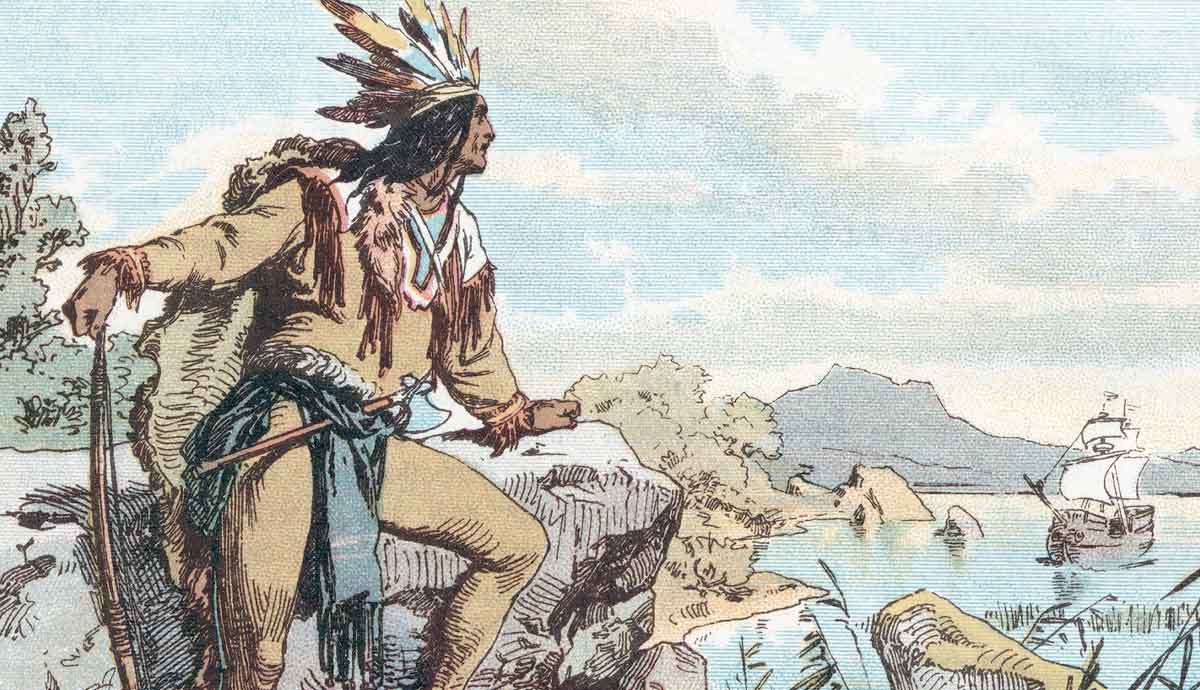Why Were Native Americans Called Indians?
Columbus landed on Hispaniola (present-day Dominican Republic and Haiti) in October 1492. He thought hed reached the East Indies, labelling the inhabitants indios or Indians in Spanish. He named the region Las Indias or The Indies. Columbus also informed the Spanish crown that he had reached Asian fringes. Later, the Caribbean region would be renamed, but only as the West Indies. This allowed for the differentiation from the East Indies, part of Asia. The Indians for all Native American tribes would persist down to modern times.Resistance to Change1474 Map with a Modern Map Imposed. Source: Florida Center for Instructional TechnologyThe Europeans realized their navigational error by the early 1500s. Realizing that a whole different continent existed, maps and other documents now reflected this change, except for the Indies or Indian terms. These misnomers still appeared to distinguish the area from Asia. Plus, as history has shown, bureaucrats can be resistant to name changes.The administrative opposition stemmed from the change in the status quo. The term Indian lay embedded in all kinds of literature, legal documents, maps, and trade routes. The merchant companies bore names such as The Dutch West Indies Company, for example. Changing the names of these colonial governments would be expensive, both politically and economically.1700s Map Showing West Indies Name. Source: Library of CongressThe later American governments continued the practice. Indian became a blanket term when dealing with Native American tribes. Action reports, census records, and legal classifications often referred to Indians rather than the tribes actual name. Perhaps unintentionally, but Columbuss mistake still lingered three centuries later. Some Native Americans refer to themselves as Indians. The American government branch tasked with assisting Native Americans is the Bureau of Indian Affairs.Also, naming all Natives as Indians led to an oversimplification. The American continent was home to a vast array of tribes, languages, and cultures.The Cultural ImplicationsEngraving of New World colonists trying to negotiate peaceful relations with Native Americans by Theodor de Bry and Matthus Merian, 1634. Source: Virginia Historical SocietyDespite just being an expression, being called Indian versus Native American could set a tone for a vast number of groups. The term Indian for non-Native Americans allowed them to be portrayed only in specific ways. This occurred in literature, movies, and other mediathe view: the hostile warrior or the noble savage.In America, the Civilization Fund Act of 1819 paid religious groups to educate Native children to civilize them. Next came the Board School System (1860-1978) with the same goal: to educate Native children for assimilation. This would help address the Indian problem. Students could not speak their native languages or cultural ways. By creating such trauma, tribal cohesion would break down.BIA Seal. Source: bia.govLater on, Columbuss mistake would be reinforced in popular media (pulp fiction, Wild West shows). These books and shows described Indians as whooping savages, riding into rob or kill.In diplomatic or legal terms, the term Indian was adopted in the jargon. Between 1778 and 1871, the U.S. and Native nations signed over 350 treaties. Indian referred to the tribes in most cases. Even discriminatory laws such as the 1830 Indian Removal Act made no difference. The U.S. Bureau of Indian Affairs was created early in the 19th century, reinforcing the misnomer.In an ironic twist, the signed treaties could explain why Native Americans are still called Indians. The treaties often contain land agreements, and it may be difficult to withdraw from the words implications.A Mixed Response 1973 AIM Poster. Source: Wiki MediaEven today, there are differences in Native American communities. In official contexts, some tribes used the term Indian in legal matters. One major organization is the Great Sioux Nation of Indians. Native American became popular in the 1970s as a more accurate, respectful term. These tribes include the Cherokee Nation, Choctaw Nation, and the Navajo Nation.


